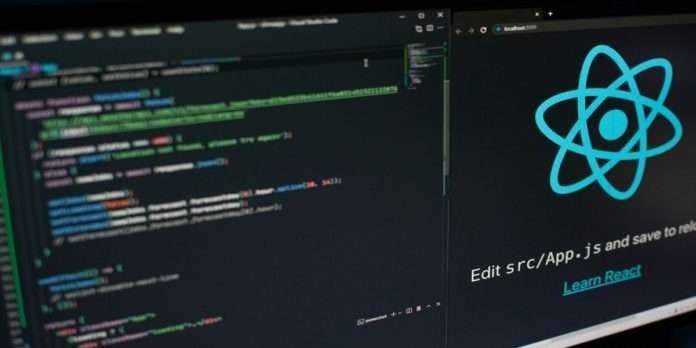Imagine accessing and visualizing massive datasets, uncovering trends and patterns in real-time, all from the convenience of your mobile device. This is the exciting future of big data visualization, and React Native, a powerful cross-platform development framework, empowers you to make it a reality.
By 2028, mobile data traffic is projected to surge to 329 exabytes (EB) per month, representing a staggering increase of over 300 EB per month compared to the 2018 figures.
Understanding Real-Time Data Visualization:
Real-time data visualization involves the dynamic representation of data as it is generated or updated. This approach allows users to interact with data streams, explore trends, and gain actionable insights instantly. With React Native, developers can create visually appealing and responsive interfaces for displaying real-time data in mobile applications.
Why React Native for Big Data Viz?
React Native shines for developing mobile apps that need to handle complex data and provide smooth, interactive experiences. For instance, imagine a retail app that displays real-time sales data by location, instantly revealing a 20% surge in a specific store. React Native enables such dynamic visualizations, empowering informed decisions on-the-go.
Here’s why it’s a great choice for real-time big data visualization:
- Cross-platform development: Reach both iOS and Android users with a single codebase, saving time and resources.
- Performance and responsiveness: React Native utilizes native UI components, ensuring your app feels fast and fluid, even with heavy data visualizations.
- Large community and ecosystem: Benefit from a wealth of libraries, tools, and support to simplify development and integration with big data platforms.
- Declarative programming: Focus on describing what your app should look and behave like, leaving complex rendering and state management to React Native.
Integrating React Native with Big Data Platforms:
To build real-time data visualization apps, developers need access to large datasets stored in Big Data platforms such as Apache Kafka, Apache Spark, or Amazon Kinesis. React Native provides the frontend framework for displaying the data, while Big Data platforms handle the storage, processing, and streaming of data in real-time.
To achieve this integration successfully, developers need to follow a series of steps:
Data Source Identification: Identify the source(s) of data that will be ingested into the Big Data platform. This could include sources such as IoT devices, server logs, or social media feeds.
Data Ingestion: Implement mechanisms to ingest data from various sources into the Big Data platform. This may involve setting up data pipelines using tools like Apache NiFi or custom scripts.
Data Processing: Utilize the capabilities of the Big Data platform to process and analyze incoming data streams in real-time. This could involve tasks such as filtering, aggregation, and enrichment of data.
Real-Time Streaming: Configure the Big Data platform to stream processed data to the React Native application in real-time. This ensures that the app receives the latest updates and insights as soon as they are available.
Integration with React Native: Develop the frontend of the application using React Native, leveraging its components and libraries to create interactive data visualizations. Use frameworks like D3.js or Victory.js to render charts, graphs, and other visual elements based on the incoming data.
User Interface Design: Design an intuitive and user-friendly interface for the React Native application, allowing users to interact with the data visualizations seamlessly. Consider factors such as responsiveness, accessibility, and aesthetics to enhance the user experience.
Testing and Optimization: Thoroughly test the integration between React Native and the Big Data platform to ensure data accuracy, reliability, and performance. Optimize the app for speed and efficiency, considering factors such as data latency and resource utilization.
By following these necessary steps and best practices, developers can successfully integrate React Native with Big Data platforms to build powerful real-time data visualization apps that provide valuable insights to users.
Key Features of Real-Time Data Visualization Apps:
Live Updates: Real-Time Data Visualization Apps offer live updates, continuously fetching and displaying the latest data streams. This ensures users have access to up-to-date information, empowering them with timely insights for informed decision-making and enhanced user experiences.
Interactive Charts: Interactive Charts in Real-Time Data Visualization Apps empower users to engage with data dynamically. They can zoom in on specific data points, customize visualizations, and gain deeper insights, enhancing their understanding and facilitating informed decision-making.
This interactivity fosters a more intuitive and engaging user experience within the app.
Alerts and Notifications: Alerts and Notifications in Real-Time Data Visualization Apps provide proactive insights to users by triggering notifications or alerts when predefined thresholds or anomalies are detected in the data.
This feature ensures timely awareness of critical events, enabling users to take immediate action and make informed decisions based on real-time information.
Offline Support: Offline Support in Real-Time Data Visualization Apps allows React Native applications to cache data locally, ensuring continuous access to information even in environments with limited or no connectivity.
This feature enhances user experience by enabling seamless interaction with visualizations, regardless of network availability, ensuring uninterrupted productivity and access to insights.
Bridging the Gap: Connecting to Big Data Sources
To access and process big data within your React Native app, you’ll need to connect to appropriate sources. Consider these options:
- Cloud platforms: Leverage services like Apache Spark on Google Cloud Platform or Amazon EMR to process and store data, then use APIs to retrieve real-time insights for visualization.
- Streaming platforms: Utilize Apache Kafka or RabbitMQ to receive continuous data streams and update your visualizations in real-time.
- On-premise solutions: If you have on-premise big data infrastructure, tools like Apache Zeppelin or H2O Wave can provide real-time data access and visualization capabilities.
Visualization Libraries: Bringing Insights to Life
Once you have your data stream, React Native offers a range of visualization libraries to translate it into meaningful visuals:
- Recharts: A lightweight component library with a diverse set of charts and graphs.
- Victory: Offers flexibility and customization for creating unique and interactive visualizations.
- MPAndroidChart: Powerful charting library for Android, with React Native wrappers available.
- react-native-svg: Utilize Scalable Vector Graphics (SVG) for high-quality and interactive visualizations.
Remember: Choose libraries that align with your specific data types, desired interactions, and performance requirements.
Building for Real-Time: Key Considerations
- Data filtering and aggregation: Allow users to refine their view and focus on specific insights.
- Efficient data updates: Implement strategies like incremental updates or web sockets to minimize data transfer and maintain responsiveness.
- Offline capabilities: Consider caching mechanisms to allow users to explore data even without an internet connection.
- Mobile-friendly interactions: Design intuitive gestures and touch interactions for efficient data exploration on small screens.
Use Cases for Real-Time Data Visualization Apps:
Financial Services:
Real-Time Data Visualization Apps benefit financial services by enabling the monitoring of stock market trends, tracking real-time transactions, and analyzing portfolio performance.
These apps provide instant insights into market fluctuations, enabling traders to make timely decisions and optimize investment strategies.
Additionally, they facilitate the identification of emerging opportunities and risks, empowering financial professionals to stay ahead in dynamic markets.
IoT and Smart Cities:
Visualize sensor data from IoT devices to optimize energy usage, manage traffic flow, and enhance public safety. Real-Time Data Visualization Apps play a vital role in IoT and Smart Cities by visualizing sensor data from IoT devices.
They enable authorities to optimize energy usage by monitoring consumption patterns, manage traffic flow by analyzing real-time traffic data, and enhance public safety by detecting anomalies and responding promptly to emergencies.
These apps empower cities to become more efficient, sustainable, and responsive to the needs of their citizens.
For example, in a smart city context, real-time data visualization apps can monitor various aspects such as air quality, temperature, traffic density, and noise levels through IoT sensors deployed across the city.
By visualizing this data in real-time, city officials can identify pollution hotspots, predict traffic congestion, and even detect unusual patterns indicating potential safety hazards.
This enables them to take proactive measures to address environmental concerns, optimize traffic flow, and ensure public safety in a timely manner.
Healthcare:
Real-time data visualization apps in healthcare can revolutionize patient care by enabling healthcare providers to monitor patient vitals continuously. By integrating with wearable devices and medical sensors, these apps can track vital signs such as heart rate, blood pressure, and blood glucose levels in real-time.
Additionally, healthcare professionals can analyze medical records and trends to identify patterns, detect early signs of deterioration, and intervene promptly. Moreover, these apps can play a crucial role in tracking disease outbreaks by visualizing epidemiological data and facilitating timely public health interventions.
Conclusion:
Real-time data visualization apps powered by React Native and Big Data offer unprecedented opportunities for businesses to gain actionable insights and make data-driven decisions. By leveraging the capabilities of both technologies, developers can create innovative mobile applications that provide users with valuable information anytime, anywhere. As the demand for real-time analytics continues to grow, mastering the art of building real-time data visualization apps will become increasingly essential for businesses across industries.












